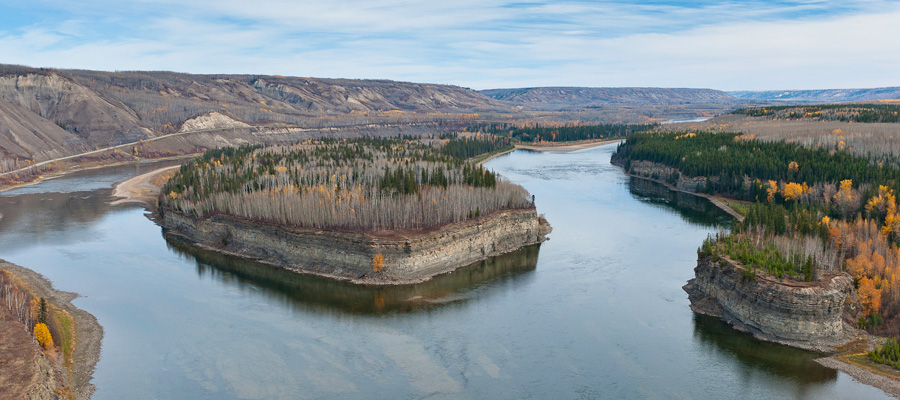Peace River Frack-Up
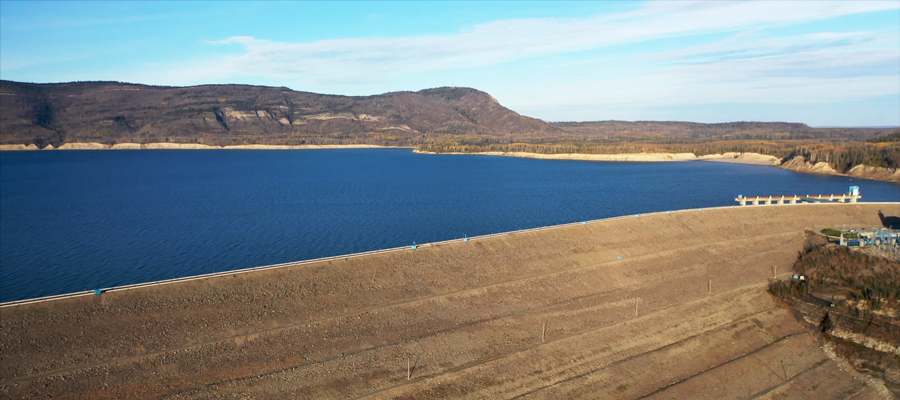
Part 1 of a report on how fracking poses risks to BC Hydro’s Peace River dams
Read Part 2 of the report
View timeline
BC Hydro has known for well over a decade that its Peace Canyon dam is built on weak, unstable rock and that an earthquake triggered by a nearby natural gas industry fracking or disposal well operation could cause the dam to fail.
Yet for years, knowledge of the dam’s compromised foundation was not shared widely within the Crown corporation. It was even kept secret from members of a joint federal/provincial panel that reviewed the Site C dam, now under construction 70 kilometres downstream of Peace Canyon in the Montney Basin—one of the most active natural gas fracking zones in British Columbia.
The disturbing revelation is among many contained in hundreds of emails, letters, memos and meeting notes released by the publicly-owned hydro utility in response to a freedom-of-information (FOI) request by the Canadian Centre for Policy Alternatives, BC office.
The documents show that BC Hydro officials knew from the moment the Peace Canyon dam was built in the 1970s that it had “foundational problems,” and that if an earthquake damaged the structure’s vital drainage systems it could be a race to stabilize the dam before it failed.
The documents also show that BC Hydro’s concerns about threats to the dam were discussed “at the highest level” within the provincial government ten years ago, but that unidentified provincial Cabinet ministers at that time rejected taking any action.
The documents have been augmented with a raft of emails supplied by a former BC Hydro construction manager, who oversaw $350 million in retrofits at the Peace Canyon and WAC Bennett dams in 2007, and who is speaking out publicly for the first time about his concerns.
A compromised foundation
Built in the late 1970s, the Peace Canyon dam lies a short distance downriver from the massive, earth-filled WAC Bennett dam, which impounds Williston Lake—the seventh-largest hydro reservoir on earth by water volume. The FOI documents show that the dam was built on top of layers of sedimentary rock, including shale—a rock known to be difficult to work with when big engineering projects are involved.
“A number of weaker bedding planes were identified underneath the dam during construction. Some of these exist directly below the dam within the foundation, and shear tests on bedrock core samples indicated shear resistance that was significantly lower than originally anticipated during design,” reads one internal report on Peace Canyon prepared by BC Hydro in 2017. “The dam is marginally stable under full uplift considerations, which does not meet modern design practice.”
The discovery was a bombshell. Since the shale rock underlying the dam was more susceptible to shearing or breaking than previously thought, it was vital to prevent any industrial activities nearby that could possibly trigger earthquakes.
But that knowledge was not widely shared within BC Hydro itself, even when disturbing tremors started to be felt at the dam in 2007—more than 30 years after problems were first detected.
“The dam is marginally stable under full uplift considerations, which does not meet modern design practice.”
Included in the list of people not to be told was Dave Unger, who began a year-long stint with the Crown hydro provider in December 2006.
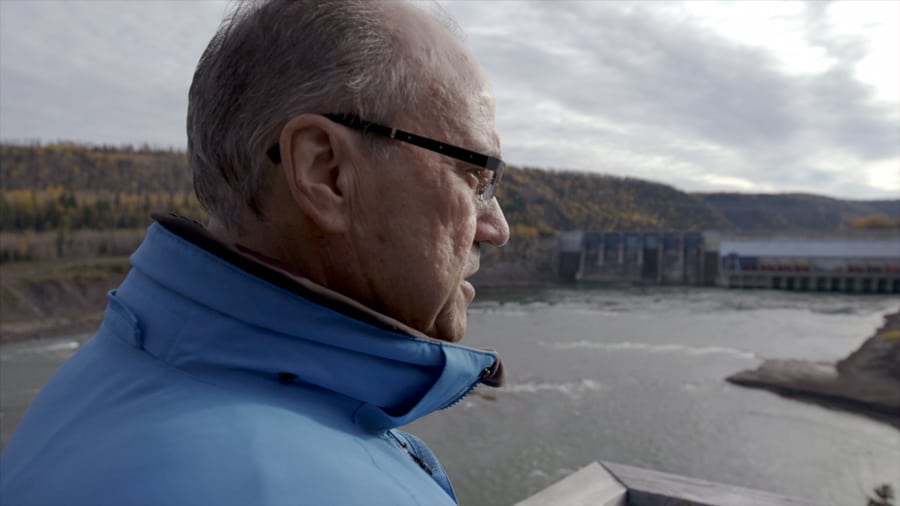
Dave Unger, a former construction manager for BC Hydro, was the first to report troubling ground motions at the Peace Canyon dam. Photo: Jayce Hawkins.
“My stomach went into my throat.”
Unger was hired as the construction manager at BC Hydro’s Peace region dams where he oversaw the dismantling and replacement of power-generating equipment at both the Peace Canyon and WAC Bennett dams.
The work was complex and required the disassembly and replacement of very heavy components including rotors, stators and turbines. Lifting some of the equipment was so complex that two cranes had to be used in conjunction to lift more than 1 kiloton or 1 million kilograms weight at a time.

Oil and gas companies hold “subsurface rights” that allow for drilling and fracking nearby BC Hydro’s Peace River dams, including Site C, FOI documents reveal. Source: BC Hydro FOI release
In the summer of 2007, while Unger sat in his office at Peace Canyon, he had a sudden, sickening sensation that the earth was shifting beneath him. It was the third notable ground-shaking event and by far the strongest he had experienced at the dam that year.
“I felt a real tremor and my stomach went into my throat. I opened up the door and I could hear a ‘ping’ as the concrete split right from the office door out to the front door, which is one hundred feet away,” Unger said. “That really woke me up.”
At first, Unger wondered whether the shaking was related in some way to the crane operations themselves. But he soon rejected that idea. There were just too many signs that the dam itself was under stress. There were cracks in the concrete floors, cracks in the support beams and cracks in the powerhouse.
“It was just incredible what I found,” Unger later recalled. “I couldn’t believe what I saw, and nobody was doing anything about it.”
BC Hydro eventually dispatched Tibor J. Patakay, a professional engineer, to investigate. Like Unger, Patakay found that the construction work didn’t explain the shaking. Something more elemental and potentially ominous was in play. The canyon walls that the dam was anchored to were slowly moving, Patakay said. Additionally, water pressure appeared to be causing “leaky joints and cracks” that penetrated through the dam’s exterior walls.
“I felt a real tremor and my stomach went into my throat. I opened up the door and I could hear a ‘ping’ as the concrete split right from the office door out to the front door, which is one hundred feet away.”
If, as Unger and others to work at the dam later suspected, encroaching natural gas industry fracking operations were triggering earthquakes. That was not good news for a dam with a compromised foundation, and certainly not good news for the people living and working downstream.
“Your broken record was listened to.”
In 2009, two years after Unger’s departure, Scott Gilliss began writing email after email to his superiors expressing fear about how encroaching fracking operations could destabilize BC Hydro’s Peace Canyon dams. Gilliss was BC Hydro’s dam safety specialist in the Peace region, a position he still holds today.
The FOI records show that Gilliss was particularly worried about the Peace Canyon dam given eerie similarities between it and a dam in California that had failed more than 50 years earlier.
At 3:38 p.m. on December 14, 1963, a hole opened on the face of the Baldwin Hills dam outside of Los Angeles. The hole rapidly expanded under pressure and eventually split the structure open, sending an unstoppable wall of water rushing downhill. Five people were killed and 277 homes were either destroyed or extensively damaged in the aftermath of the dam’s failure.
Thankfully, the death toll was far lower than it could have been because local police had enough time to issue a warning that the dam’s collapse was imminent.
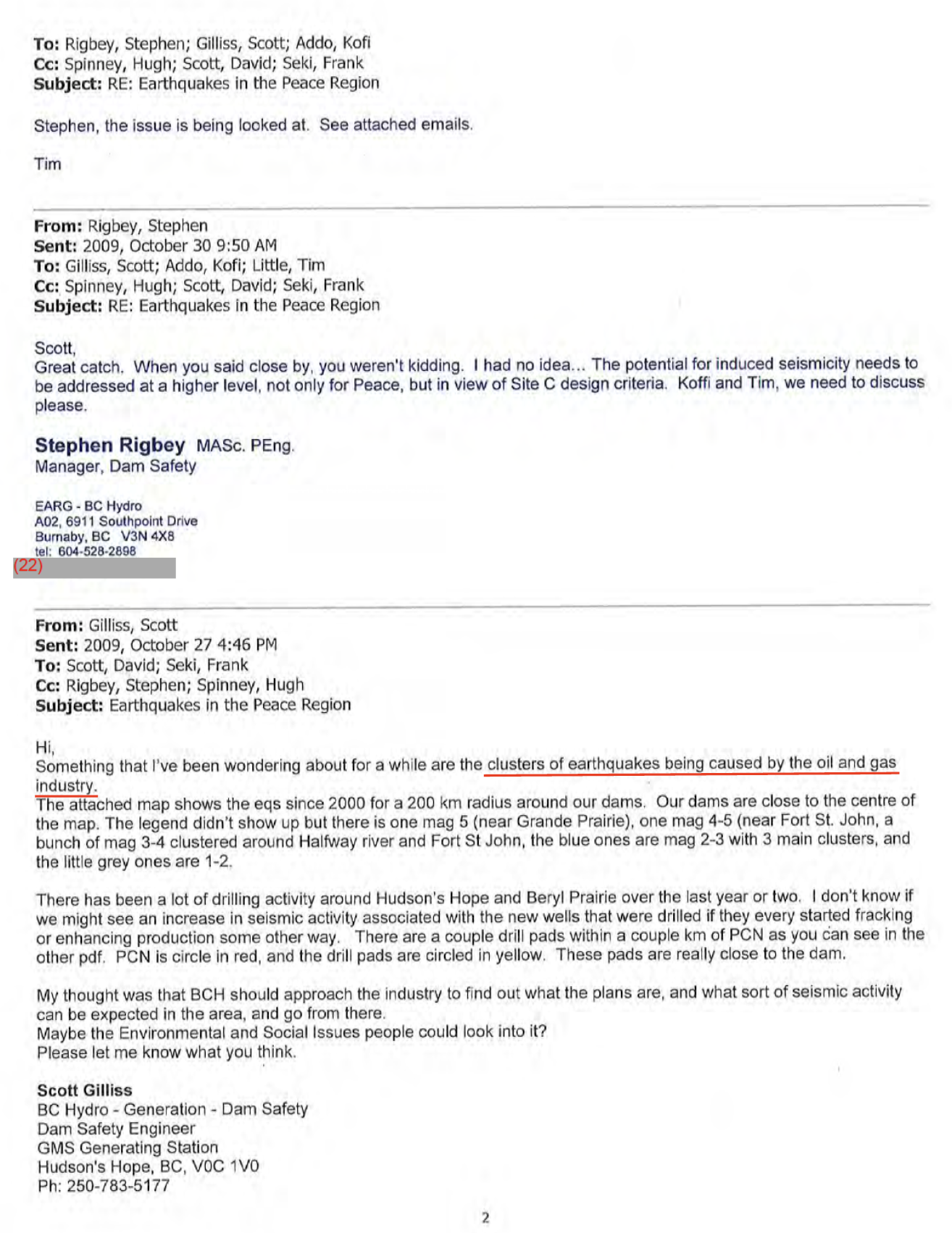
BC Hydro’s Scott Gilliss was among the earliest to sound alarms about the risks to BC Hydro’s Peace River dams from encroaching fracking operations, FOI documents reveal. Source: BC Hydro FOI release.
The Baldwin Hills dam was built near known fault lines and near where oil and gas companies operated, a dangerous mix that Gilliss knew was also in play at Peace Canyon. Gilliss also knew that when investigators subsequently looked into what went wrong at Baldwin Hills that “pressure injection” operations by oil and gas companies were at least partly to blame for the “slow movement of the faults” under the reservoir that led to the dam’s demise.
Gilliss began writing numerous emails warning his superiors about the dangers associated with encroaching oil and gas industry operations in the vicinity of the Peace Canyon dam and the community immediately downstream of the dam, Hudson’s Hope, where Gilliss himself lived.
Gilliss alerted several senior officials with BC Hydro about “clusters” of earthquakes that were being reported in fracking operations in northeast BC. He also warned about proposed natural gas wells that were to be drilled and fracked near Hudson’s Hope, with some wells slated to be drilled just two kilometres away from the Peace Canyon dam.
Gilliss recalls writing so many emails in 2009 that in his own words he started to “sound like a broken record.”
Ray Stewart, BC Hydro’s chief safety, health and environmental officer and director of dam safety, soon picked up on Gilliss’s concerns.
The biggest risk was increased earthquakes that could “re-activate” existing faults in proximity to the dam.
In December 2009, Stewart wrote Glen Davidson, British Columbia’s comptroller of water rights. As comptroller, Davidson was in charge of the department overseeing dam safety in the province.
“Hudson’s Hope Gas, a subsidiary of Canada Energy Partners and GeoMet Inc. have drilled at least eight, roughly 1,000 m deep, coalbed methane production wells in the Hudson’s Hope region to date,” Stewart wrote Davidson. “Future plans could include drilling over 300 wells.”
Stewart warned that there were “immediate and future potential risks to BC Hydro’s reservoir, dam and power generation infrastructure.” The biggest risk was increased earthquakes that could “re-activate” existing faults in proximity to the dam, Stewart said.
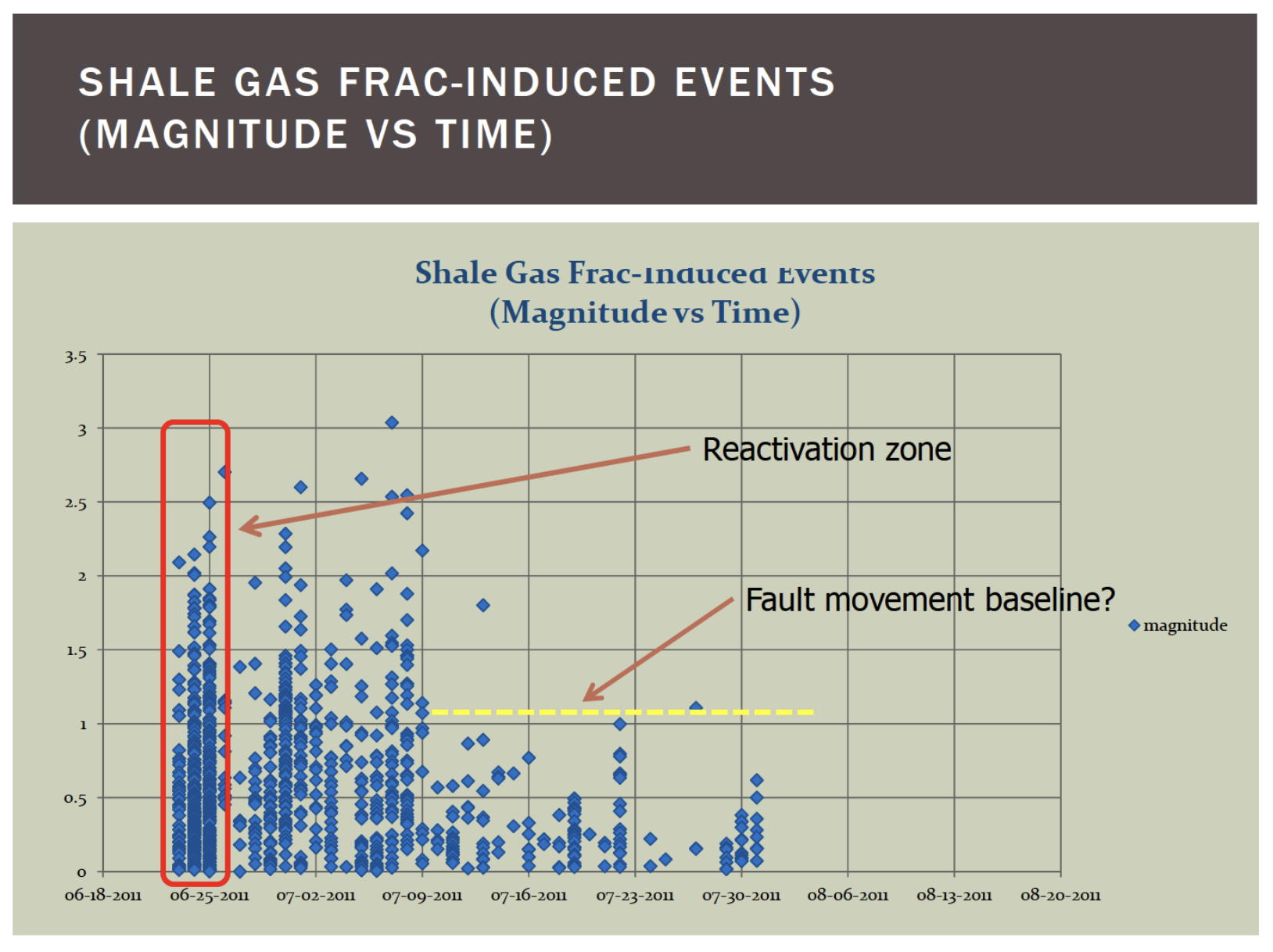
Earthquakes triggered by fracking operations are both increasing in number and in strength, FOI documents reveal. Source: BC Hydro FOI release.
Thanks to Gilliss’s numerous emails, fracking and dam safety was also discussed by at least two provincial Cabinet ministers.
“Your broken record was listened to at the highest level (Minister to Minister) and was ‘officially’ shut down,” Stephen Rigbey, BC Hydro’s then manager of dam safety, told Gillis in an email.
“A dead issue.”
It is unclear who the ministers were. But BC’s energy minister at the time was Blair Lekstrom, and Lekstrom had responsibility for both BC Hydro and the Oil and Gas Commission, which regulates the oil and gas industry in the province. Barry Penner, meanwhile, was environment minister and had responsibility for dam safety.
Unfortunately, Rigbey told Gilliss, the ministerial meeting did not go BC Hydro’s way. The report-back was that unless BC Hydro could definitively show “a smoking gun” that linked a specific fracking operation to a specific earthquake detected at a specific dam location, a ban on fracking operations nearby BC Hydro’s Peace River dams was “a dead issue.”
Rigbey told Gilliss that all that could be done for the time being was to keep Davidson’s office informed and, through Davidson, presumably Penner.
But Gilliss was not to be dissuaded and kept up his email alerts.
On February 18, 2011 he warned that it wasn’t just the Peace Canyon dam that was at risk from fracking operations. The WAC Bennett dam, where two sinkholes were discovered at the crest of the 183-metre high structure in 1996, necessitated a rapid drawdown of the reservoir and hasty repairs.
“The Montney formation shale, which is being developed by these companies, may extend below the WAC Bennett Dam. This is concerning because the seismic stability of the dam may be questionable given the possibility of internal erosion of the core and transition (I have already added a Dam Safety issue in our Database on this subject),” Gilliss wrote.
Gilliss and others began to contemplate the unthinkable—“that a frack opened up a fissure in the reservoir, and there was a release of gas, that could have displaced the water and caused the oscillation.”
On August 28, 2012, Gilliss wrote again with further concerns about the WAC Bennett dam. This time it was to report about a “strange oscillation event” or sudden, unexplained change in the water levels at Williston reservoir—the massive body of water impounded by the dam.
The event had occurred the month before, Gilliss said, and was considered so perplexing that BC Hydro officials flew over the entire reservoir the next day looking for an explanation.
The suspicion was that a massive amount of soil and rock had sloughed into the reservoir—a possibility, given the notoriously slide-prone banks of the reservoir. But no sign of a big landslide was found.
With no means of checking for underwater slides, Gilliss and others began to contemplate the unthinkable—“that a frack opened up a fissure in the reservoir, and there was a release of gas, that could have displaced the water and caused the oscillation.”
Little says little
In 2014, two years after Gilliss wrote that email, three members of a joint review panel tasked by the federal and provincial governments with reviewing the then proposed Site C dam held meetings at the Pomeroy Hotel in Fort St. John.
One of the day’s agenda items was earthquakes and potential risks to BC Hydro’s Peace River dams. Among the experts to testify for BC Hydro that day was Tim Little, a senior consulting engineer with 37 years’ work experience.
Little was introduced to the panel as “an expert in seismic hazard analysis” and as BC Hydro’s former chief engineer, a position that he had occupied from 2007 and 2011, years when Unger, Gilliss, Rigbey and Stewart had repeatedly raised concerns about problems at Peace Canyon.
Little told the panel members that BC Hydro had designed the Site C dam to an extremely high safety standard. “The seismic design of Site C is very robust and the dam can safely withstand earthquakes up to the 1 in 10,000 level,” Little said. The dam’s designers also took into account the impact that earthquakes with magnitudes of up to 7.6 could have on existing faults in the area, Little added. He later said that WAC Bennett dam had been assessed “at a preliminary level” and that it, too, would likely survive a 1 in 10,000 event.
Little was then asked about a “seismic performance assessment” of the Peace Canyon dam, and replied that he did not know what the assessment’s status was. (At the time of Little’s presentation, BC Hydro’s board of directors had committed to an “updated stability assessment of the dam including a new analysis of the “seismic hazard” risks at the dam. But the work had not commenced. BC Hydro, in response to questions filed by the CCPA, says current plans call for new seismic “monitoring instruments” costing an estimated $6 million to be installed at the dam by 2023, and for a more comprehensive “dam seismic upgrade” to begin in 2025. The upgrade’s costs are unknown at this time.)
The result of Little’s silence was that Mattison and his panel colleagues were kept in the dark about the upriver seismic problems and their potential impact on the construction and operation of Site C
At that point, panel member Jim Mattison asked Little about recent reports of clusters of earthquakes triggered by fracking activities and what impacts they might have on BC Hydro’s dams.
Little acknowledged that BC Hydro knew that earthquakes were being triggered during fracking operations and that BC Hydro was in contact with the Oil and Gas Commission about them. But he said the strength of the earthquakes was generally small, that BC Hydro had considered them in its design of the Site C dam, and that such earthquakes posed few risks.
“The fraccing (sic.) process might induce some other earthquakes, but we’ve already accounted for those in the seismic hazard analysis,” Little said. “The only thing that you might say is that fraccing speeds them up a little bit over what nature would provide on its own.”
Mattison had been appointed to the panel based on his lengthy career in the provincial civil service, including a stint as British Columbia’s water comptroller. As comptroller, provincial dam safety officers reported to him.
So it would have been natural for Mattison to ask questions of Little about the stability of the Peace Canyon dam, had Little volunteered any information about the numerous concerns that had been raised within BC Hydro about the dam.
But Little did not do so even though he himself had been warned by Rigbey in an email five years earlier that a magnitude 5.5 earthquake “could be significant for a meta-stable facility such as PCN [the Peace Canyon dam].” The result of Little’s silence was that Mattison and his panel colleagues were kept in the dark about the upriver seismic problems and their potential impact on the construction and operation of Site C—problems that only came to light when BC Hydro was forced to release documents in response to the freedom-of-information request.
When told about the existence of that and other emails, Mattison who is now retired and living in Qualicum Beach, said it left him feeling “quite uneasy.”
“There was always kind of a wonder about the seismic risk,” Mattison recalls. “They just kept saying: ‘No, we’ve looked into it. We’re on solid ground here.’”
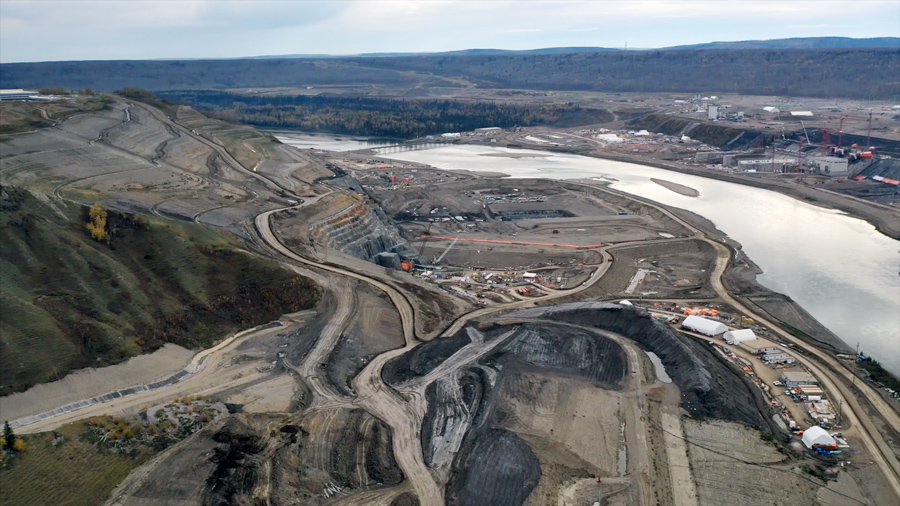
The massive Site C dam construction project as seen in October 2019. Photo: Jayce Hawkins.
“It doesn’t take much.”
In early August 2015, less than a year after Little’s appearance before the panel, the British Columbia government approved Site C—a project that former premier Christy Clark had fought hard for and later vowed to push “past the point of no return.”
Only a couple of weeks into preliminary construction work on the dam, a 4.6 magnitude earthquake north of Fort St. John was triggered at a fracking operation by Progress Energy, a subsidiary of Malaysia’s Petronas. At the time, the Clark government was actively encouraging Petronas to invest in a massive Liquefied Natural Gas plant near Prince Rupert.
The Petronas earthquake was felt for miles around and was far more consequential than industry-induced earthquakes Little was talking about.
The earthquake caught people’s attention at BC Hydro and was much on the mind of Scott Gilliss a year-and-a-half later when, in March 2017, he learned that truckloads of liquid waste were being delivered to a disposal well site just 3.3 kilometres from the Peace Canyon dam.
Disposal wells are where fossil fuel companies deliver truckloads of toxic liquid waste, including contaminated water generated at fracking operations, to be pumped deep underground for “permanent” disposal.
Gilliss alerted Rigbey, who was by then director of dam safety for BC Hydro, and Rigbey quickly contacted the Oil and Gas Commission to express concerns about the threats that the well posed to the Peace Canyon dam.
Truckloads of liquid waste were being delivered to a disposal well site just 3.3 kilometres from the Peace Canyon dam.
In an email on March 14, Rigbey noted that because of the “foundational problems” at Peace Canyon, BC Hydro had effectively downgraded the strength of ground motions that the dam could safely withstand by one third.
Were even a modest 4 to 4.5 magnitude earthquake to occur within 10 kilometres of the dam, Rigbey said that the ensuing ground motions could easily be three times stronger than what the dam could safely tolerate without some damage occurring.
“It doesn’t take much magnitude to reach this acceleration,” Rigbey warned.
“Of high concern.”
Two-and-a-half hours later, Rigbey received a reply email from Ron Stefik, the Oil and Gas Commission’s man in charge of natural gas industry disposal well operations.
“The seismic tolerance you have noted is of high concern,” Stefik wrote.
Stefik then asked BC Hydro’s dam safety chief to forward on “any engineering reports or other documentation” that the Commission could use “to support appropriate regulatory action.”
By then both Commission and BC Hydro personnel knew that there was a distinct possibility that an earthquake far stronger than a magnitude 4 could be generated at a disposal well.
Three years earlier, a 5.7 magnitude earthquake had been set off at one such well in Oklahoma, a state that prior to the arrival of the fracking industry had few tremors of note. The earthquake and several powerful aftershocks caused the ground to shake in at least 17 US states, buckled a highway in three places, damaged homes, and injured two people. Scientists who studied the event later concluded that the cumulative effect of 18 years of continuous pumping deep into the earth at the well site had unleashed the damage.
A magnitude 5.7 earthquake releases 53 times the energy that a magnitude 4.5 earthquake does and 280 times the energy of a magnitude 4 event.
Two engineers with BC Hydro—Omri Olund and Norm Stephenson—would later amplify on Rigbey’s concerns.
In light of the weak rock underlying the dam, Olund and Stephenson said, it was essential that the dam’s drainage systems function well. That included the dam’s spillway. Spillways are an essential feature of any safe dam. They are a built-in safeguard against water levels behind a dam rising too high and over-topping it—an event that can easily bring a dam down.
Unfortunately, the engineers said, the Peace Canyon dam’s spillway in particular was not up to standard. It only “marginally” satisfied requirements for “usual” operations and was considered “substantially deficient” should a strong enough earthquake occur nearby.
“The seismic tolerance you have noted is of high concern,”
Olund and Stephenson also had other concerns. The dam’s drainage gallery is at the base of and inside the structure itself. Due to the tremendous pressure that water impounded by the dam is under, water at the lowest depths gets pushed under and then up vertically through the pores in the dam’s foundation and into the gallery.
To counter this “uplift,” which left unchecked can destabilize a dam, pumps are used to drain such galleries.
“If the dam drainage pumps at PCN dam have ceased to operate, and it is not possible to open the emergency drainage valves that allow water to drain by gravity from the bucket blocks to the powerhouse sump, the water is likely going to rise in the drainage galleries to levels which will cause a rapid increase in uplift pressures,” Olund and Stephenson warned. “This will negatively impact the stability of the dam.”
The engineers were waving a danger flag filled with qualifications, but a danger flag nonetheless. If an earthquake occurred, and if the dam’s drainage pumps were compromised, and if BC Hydro could not get the pumps running properly again, there could be big trouble.
An earthquake might not immediately bring the dam down, but it could set in motion events that could cause the dam to fail. Stephenson would later say just that in a meeting between BC Hydro and Commission personnel in December 2017.
The Site C dam and “critically stressed” faults.
Less than a year after that meeting, on November 29, 2018, hundreds of workers at Site C were ordered to down tools and immediately evacuate the area after a “strong jolt” was felt at the massive construction project.
By then, workers at the site were acutely aware of the unstable terrain they were working in. Only two months earlier, a massive landslide had occurred just downstream of the dam site, prompting renewed calls for an independent safety review of the Site C project. The wall of mud, rock and trees that sloughed off the steep, unstable bank overlooking the Peace River took out a section of the only road leading into and out of the community of Old Fort.
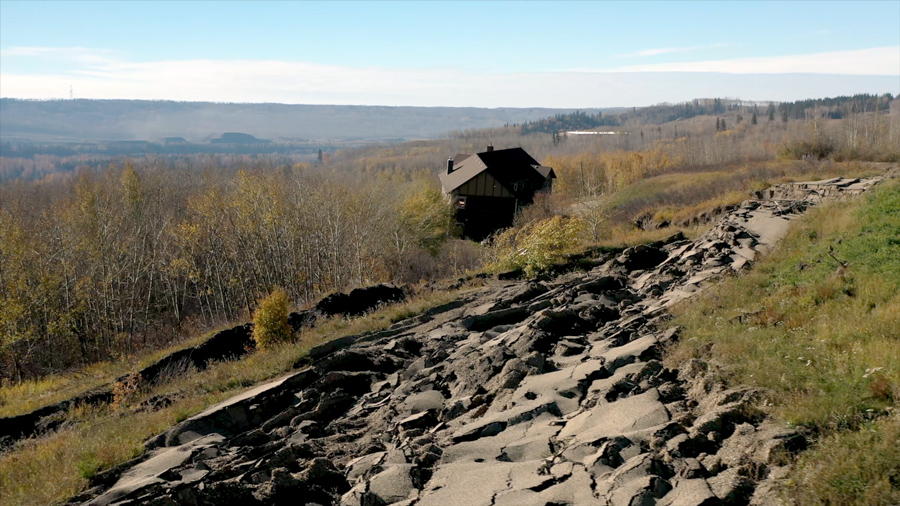
A powerful landslide in September 2018, knocked this house off its foundation and destroyed a portion of the only road leading into the community of Old Fort, downstream of the Site C project. Photo: Jayce Hawkins.
The epicenter of the November earthquake was just 20 kilometres south of Site C and was soon linked to a fracking operation at a Canadian Natural Resources Ltd. natural gas well pad.
Earlier that year, the company had pressure-pumped nearly 63 Olympic swimming pools worth of water along with chemicals and sand deep into the earth at seven gas wells drilled close together on a patch of once fertile farmland. The pressure-pumping or fracking was done to bust up the underlying shale rock and to unlock the natural gas and condensate trapped within it.
When the company pumped even more water into the earth as it fracked a further two wells, it set off the second-strongest induced earthquake yet in BC.
As work continues at Site C, more earthquakes close by the construction site and the Peace Canyon dam upstream are almost a certainty. What is far from certain and completely unpredictable is how strong those future earthquakes might be.
On November 29, 2018, hundreds of workers at Site C were ordered to down tools and immediately evacuate the area after a “strong jolt” was felt.
As three scientists noted in a report submitted in February 2019 to Michelle Mungall, BC’s Minister of Energy, Mines and Petroleum Resources, no one can predict how large an earthquake may one day be triggered by a fracking or disposal well operation. That is just one of the many big “unknowns” and “uncertainties” flagged in the report’s 232 pages.
What is certain is that parts of the South Montney basin, including the area where November 2018’s big shake occurred, are extremely susceptible to “induced” earthquakes.
According to a report submitted in June 2019 to the Oil and Gas Commission by two independent geological experts, the “Kiskatinaw Seismic Monitoring and Mitigation Area,” which lies just south of the Peace River is riddled with fractures and faults, some of which are close to Site C. Given all of those naturally occurring faults and fractures, continued approval of fracking operations involves known risks with unknown consequences.
“Only small fluid pressure increases are sufficient to cause specific sets of fractures and faults to become critically stressed,” the geologists warned, adding that “generally stressed faults” lead to earthquakes.
Expect more earthquakes, then, as natural gas companies force tremendous volumes of water down into shale rock formations in deliberate attempts to break that rock up. The same brittle rock that BC Hydro knew 40 years ago was a big problem at the Peace Canyon dam, and that could yet be a big problem at Site C.
Read Part 2 of the report
View timeline
Original FOI documents can be accessed below:
002 Part 1 BC Hydro Earthquakes
002 Part 2 BC Hydro Earthquakes
002 Part 3 BC Hydro Earthquakes
002 Part 4 BC Hydro Earthquakes
002 Part 5 BC Hydro Earthquakes
002 Part 6 BC Hydro Earthquakes
002 Part 7 BC Hydro Earthquakes
002 Part 8 BC Hydro Earthquakes
003 Part 1 BC Hydro Earthquakes
003 Part 2 BC Hydro Earthquakes
003 Part 3 BC Hydro Earthquakes
003 Part 4 BC Hydro Earthquakes
003 Part 5 BC Hydro Earthquakes
003 Part 6 BC Hydro Earthquakes
003 Part 7 BC Hydro Earthquakes
003 Part 8 BC Hydro Earthquakes
003 Part 9 BC Hydro Earthquakes
004 Part 1 BC Hydro Earthquakes
004 Part 2 BC Hydro Earthquakes
004 Part 3 BC Hydro Earthquakes
004 Part 4 BC Hydro Earthquakes
This post is part of the Corporate Mapping Project, a research and public engagement project investigating the power of the fossil fuel industry in Western Canada, led by the University of Victoria, the Canadian Centre for Policy Alternatives (BC and Saskatchewan Offices) and Parkland Institute. This research is supported by the Social Science and Humanities Research Council of Canada (SSHRC) and the Minor Foundation for Major Challenges.
Topics: Environment, resources & sustainability, Fracking & LNG, Transparency & accountability

